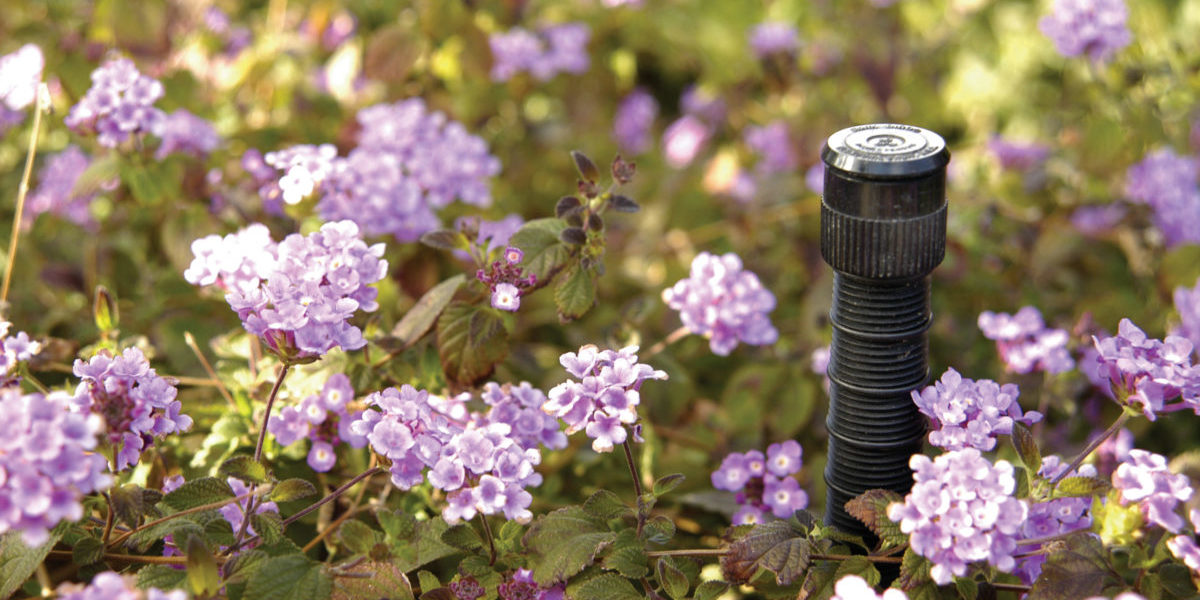If you’re anything like me, the hardest part of gardening isn’t the planting, pruning, or otherwise getting your hands dirty. For me, the first real obstacle I ran into was watering – remembering which plants get watered when, and how much, and where. These days, automation is a tempting solution for pretty much anything. For gardens, as opposed to lawns, micro irrigation is becoming a popular way to go.
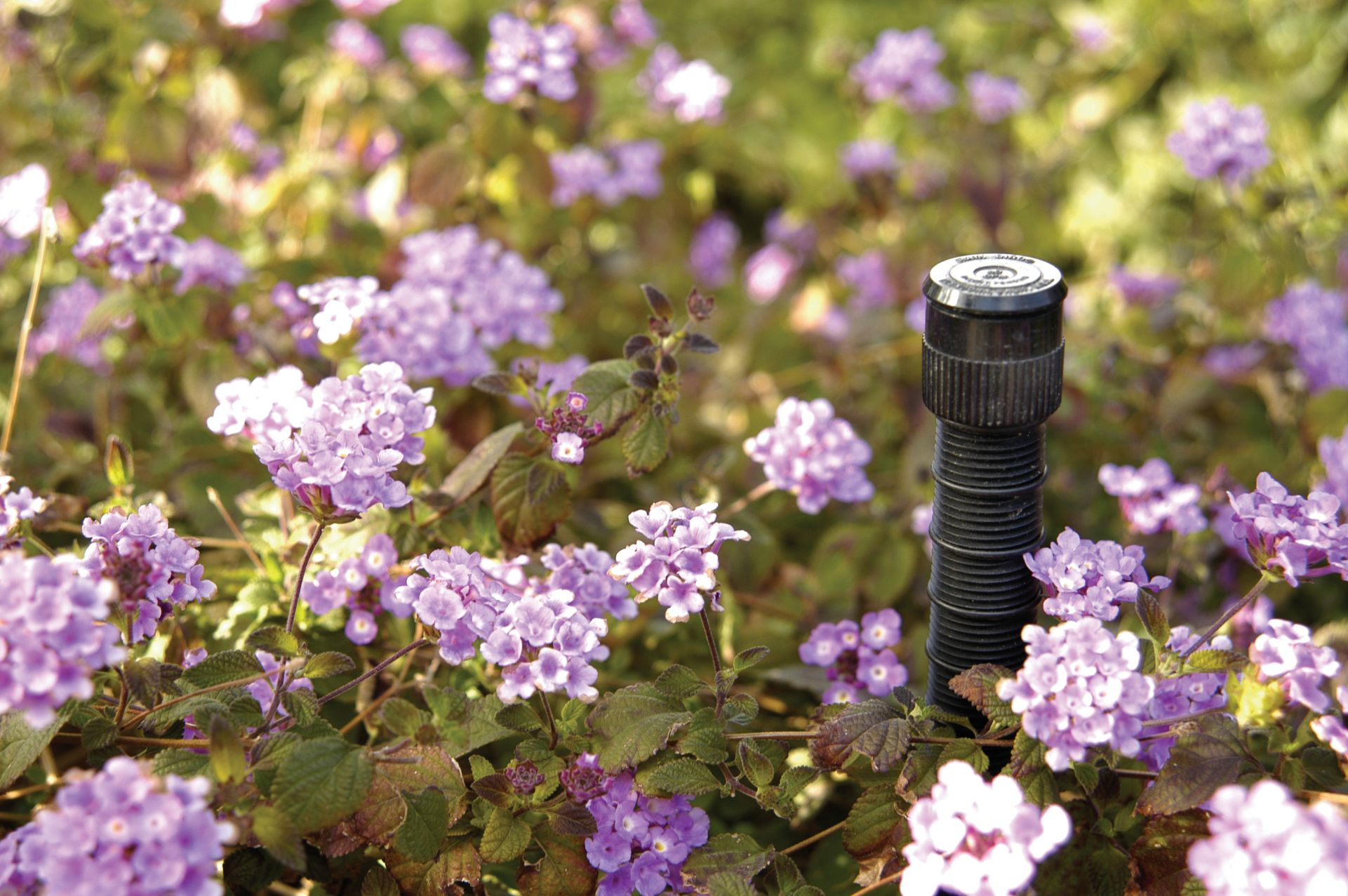
But before you invest in automating a task, you’ll want to be sure it saves you time, money, or stress in the long term. We offer an analysis in terms of four vital criteria: coverage, conservation, cost, and convenience. The convenience section may be the most important to read, as that’s where micro irrigation suffers the most despite its other benefits.
As with many of our articles, some of the following will be specific to our local climate around Calgary, Alberta. That means dry air, cold winters, hot summers, and dense clay soil. If you’re reading from somewhere else, beware of how conditions in your area may differ.
Also, while micro irrigation is a relatively popular DIY project, please note that this is not a design guide. Regardless of size, we recommend professional installations for any irrigation project, so you can be sure everything is up to code and reliable. If you do commit to designing your own, please also consult more in-depth sources, including manufacturer specifications.
Coverage: Micro irrigation is best for small applications
Mostly dealing in lawn sprinklers, we usually think of coverage as simple horizontal area. That doesn’t quite apply to micro irrigation. Like lawn sprinklers, micro systems are extremely predictable to the knowledgeable technician. However, they are only meant to cover small, specific areas.
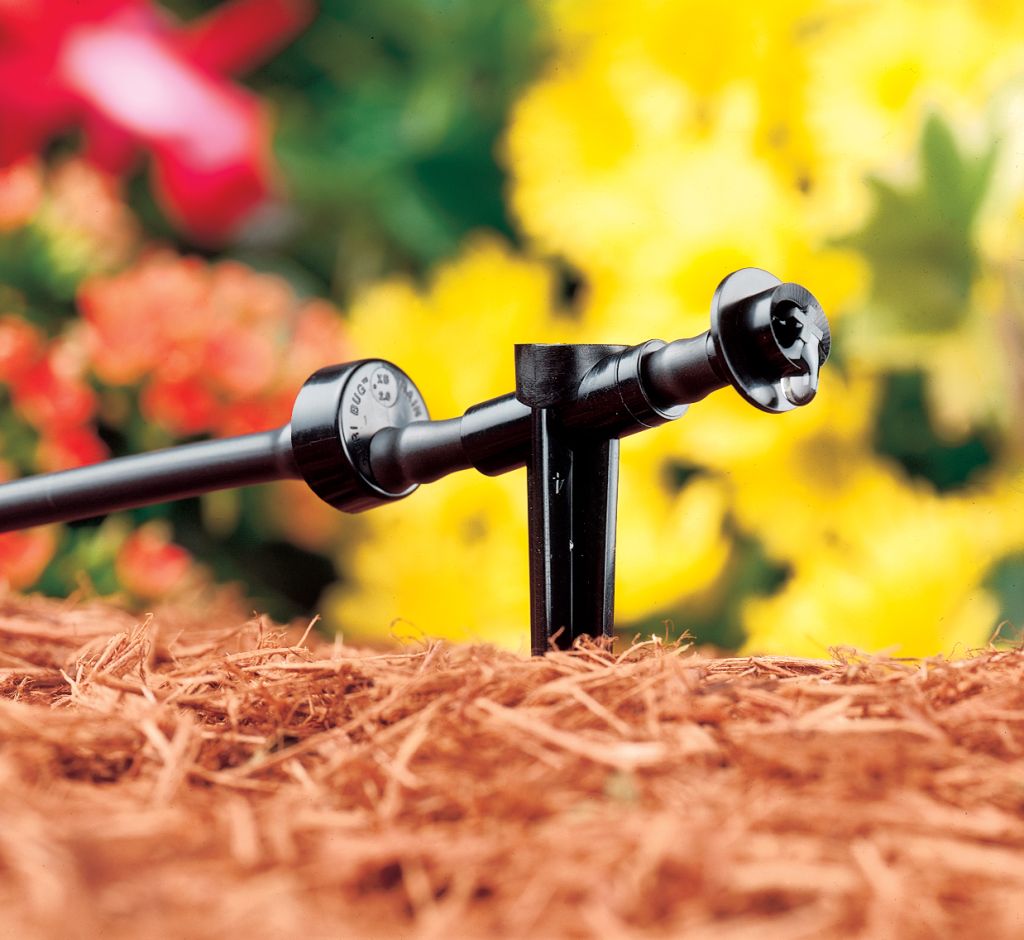
To put it more optimistically: small, specific areas are where micro irrigation shines. The parts are small and usually don’t need to be buried. Tiny, unobtrusive applicators can be embedded in tight spaces where 1” lines and full-sized sprinkler heads cannot. Box gardens, flower boxes, potted plants, and greenhouses are all serviceable by micro irrigation if watering by hand is not preferred.
A common implementation (although this is still not a design guide) is to have one or two emitters close to each plant, depending on its watering needs, or spaced every twelve inches in densely planted garden soil. Certain driplines come with emitters pre-embedded inside the tubing at that exact spacing.
For plants especially vulnerable to mildew, a drip emitter near the base of the stem may yield surer results than hand watering. Other quite delicate plants may benefit from micro mist nozzles (although this can also be achieved with most spray bottles).
Conservation: Micro irrigation can be extremely efficient
We occasionally install driplines for trees and bushes. These can deliver large amounts of water directly at ground-level over a long period of time, eliminating nearly all runoff and evaporation. It’s quite suitable for large, demanding vegetation. Slow saturation of water into the soil gives their roots plenty of time to drink up. The same principle does apply to smaller plants that may be less thirsty. Look closely, and you may see the usual ½” brown tubing in many vegetable gardens.
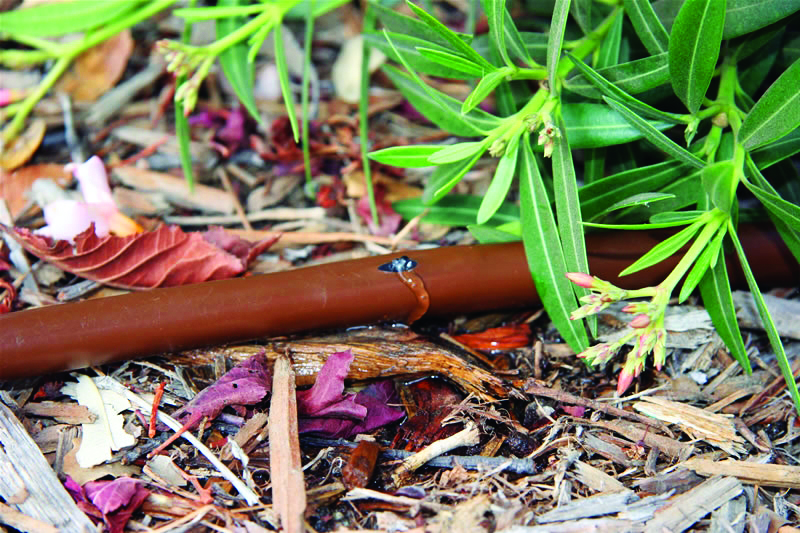
In theory, micro irrigation can be fine-tuned for extreme efficiency. But, as you can guess, there are many factors to achieving this. If you know your plants’ needs in detail, as well as the contents of your garden or potting soil, you’re about halfway there. As we’ve said of lawn sprinklers, effective and efficient automation will require nozzles with various flow rates, likely divided into separate zones with different runtimes.
Cost: The basic parts are cheap, but other factors may outweigh this
When it comes to modest applications like home gardens, micro irrigation is fairly inexpensive up-front. The tubing has thin walls by necessity, and other parts, though advanced in their design, are usually made of a few grams of injection-moulded plastic. If you want to get technical, most pressure-compensating emitters house a tiny silicone diaphragm as well. But that’s about it. Overall, parts are quite accessible.
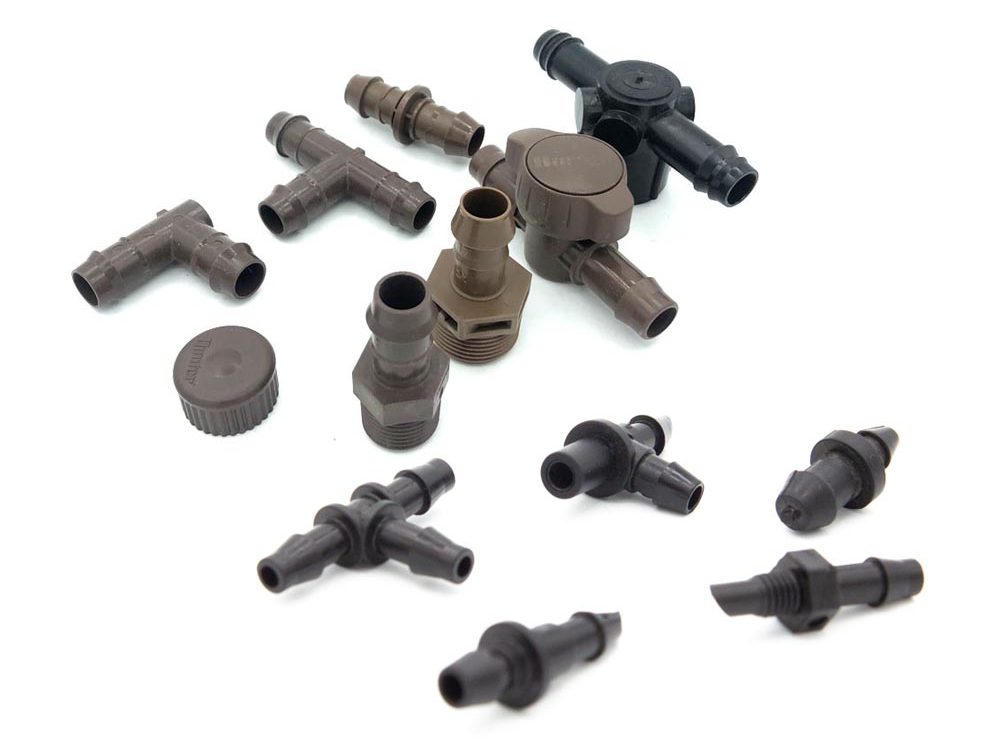
That’s what makes drip irrigation such a popular DIY option, whereas the vast majority of lawn sprinklers are professional installations. However, a professional installation is still in your best interest. Drip irrigation is still irrigation, and subject to the same cross connection controls as a full-sized underground sprinkler system. They also require filtration and pressure regulation. The small openings are vulnerable to mineral buildup from most public water sources, and micro fixtures require relatively low dynamic pressure to work as advertised. For these, contractor-grade parts are recommended to protect your investment.
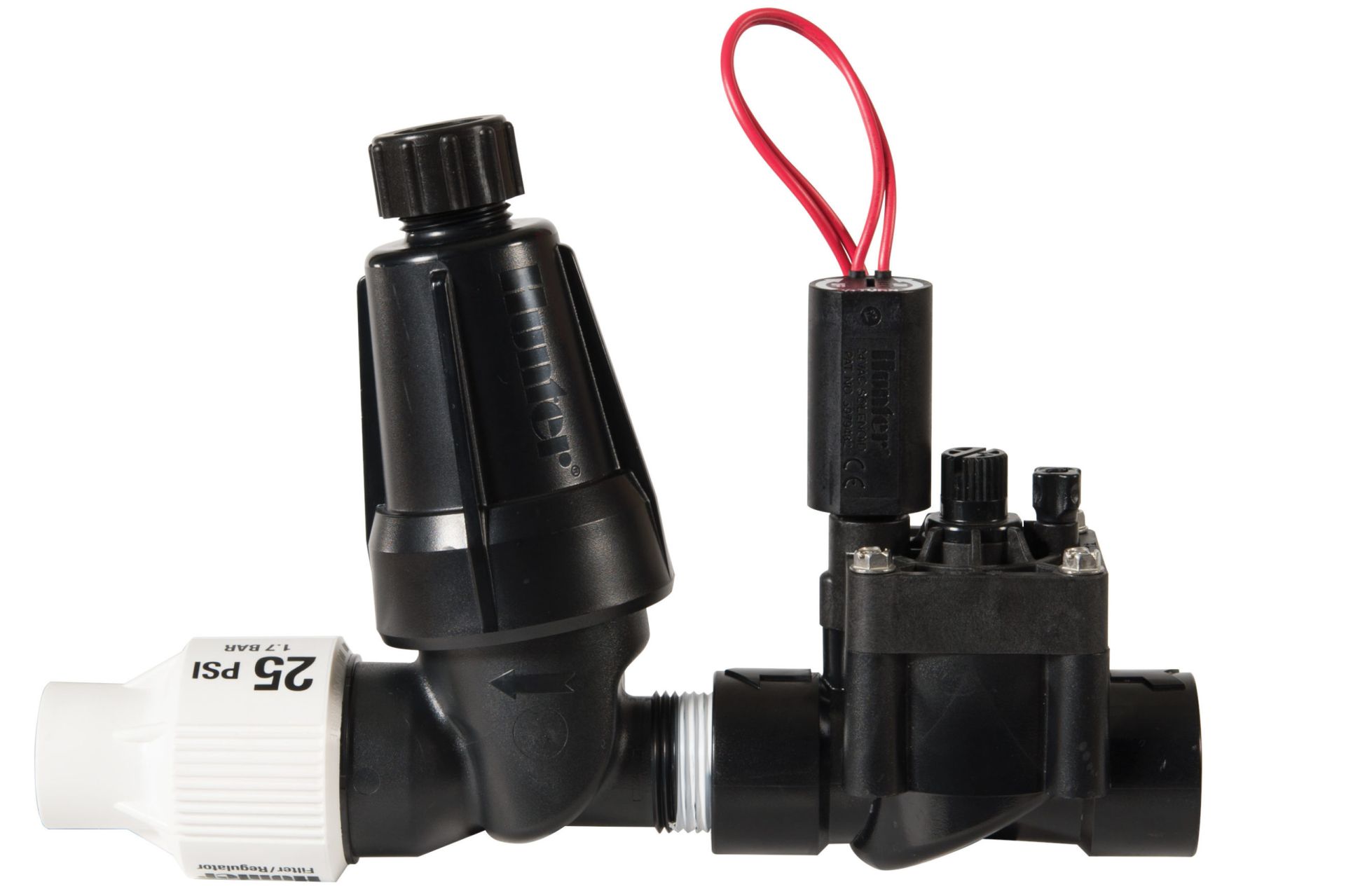
Also, while the initial investment is comparatively small, it’s hard to say that micro irrigation will save you time or money. As we’ll see in the next section, it’s all remarkably high maintenance.
Convenience: Calgary’s climate presents unique challenges to an already maintenance-heavy solution
Small openings are integral to drip emitters and micro sprayers, yet constitute a design flaw. In Calgary, and many other places, unfiltered water can eventually create mineral buildup. Suitable filters are easy to find, however. The real problem is that their low placement makes micro applicators vulnerable to external debris. Unless you’re prepared to devote the time to flushing lines and replacing parts yourself, you may end up booking far more services and repairs than most of our lawn sprinkler clients.
Granted, it’s possible to design your way around it. Drip emitters and micro sprayers are commonly held up a few inches by plastic stakes or risers. This is no guarantee against debris, but it does mitigate the problem.
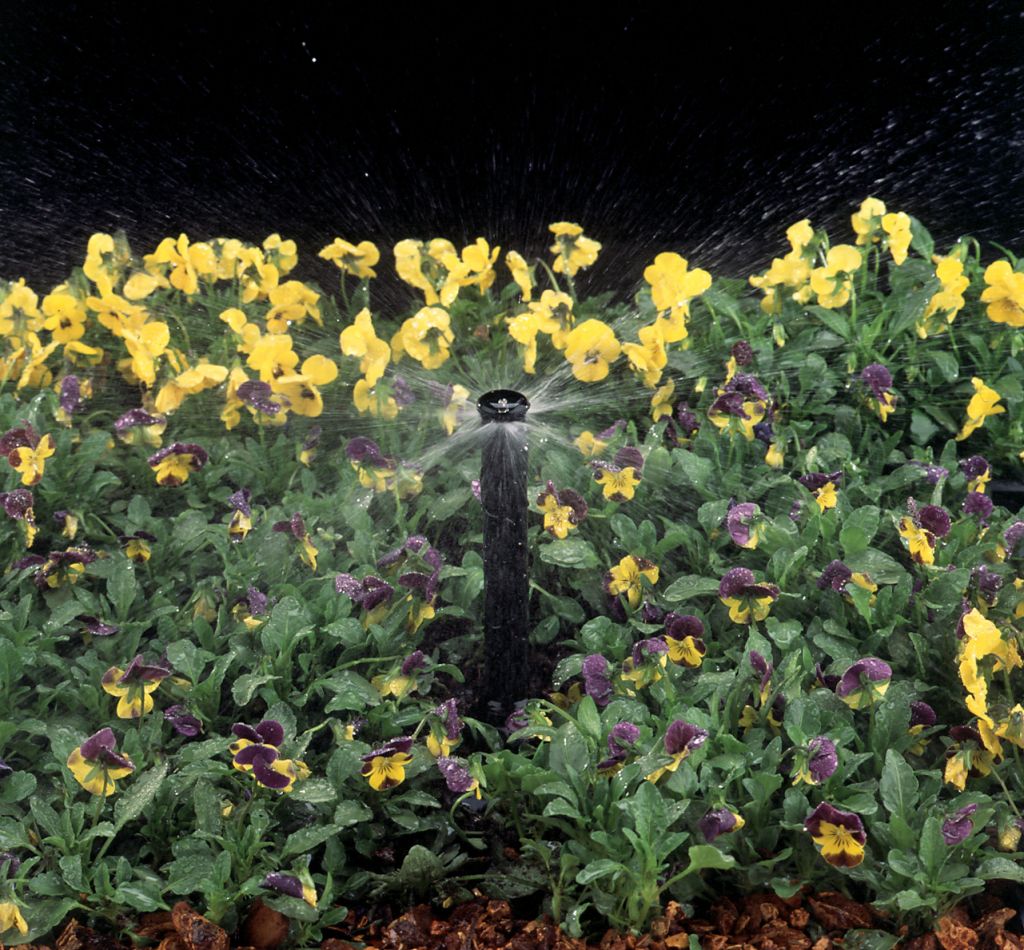
However, smart placement does nothing against the major obstacle presented by Canadian climates. Our Service Manager, Daniel, points out a troubling issue with micro irrigation this far north. No matter how big or small it is, an outdoor sprinkler system in Alberta needs to be winterized, and the only way to do that is with compressed air. Lots of it, blowing through the system at high velocity and pressure. For emitters and micro sprayers, that means tiny, easy-to-lose plastic pieces shooting off into the distance. Ironically, only driplines are safe from air compressors, but they usually need to be staked to the ground.
There are only two alternatives. The first is to dismantle and remove your drip zone in the fall and reassemble it in the spring. The second is to build the whole thing indoors. For home gardeners, neither option wins any points for convenience. There’s nothing wrong with an indoor garden on its own – that’s what I’ve got right now. However, a major vulnerability of any automated sprinkler system is that if it leaks, it could leak unnoticed, repeatedly, for months. You can imagine why I might not recommend you set-it-and-forget-it indoors.
Conclusion
Due to the maintenance complications, it’s not often that we recommend micro sprayers to Calgarians. I joked about never remembering to water my plants, but personally, I solved that problem early-on by writing up a simple chart. Micro irrigation systems are sometimes timesavers for commercial applications like plant nurseries or hydroponic farms, but in such cases it’s even more important to be confident that you will see a return on your investment.
As for home gardens, it’s not practicable unless you can keep up with very high maintenance demands – either contracting professionals, or just being the very fastidious, mechanically-inclined sort of hobbyist. Frankly, that’s actually the aspect of it that I still find quite tempting. If you enjoy problem-solving, drip irrigation promises endless fun.
Book a service or call us today @ 587-200-3994. We provide top-notch services from Irrigation Association-certified professionals.
